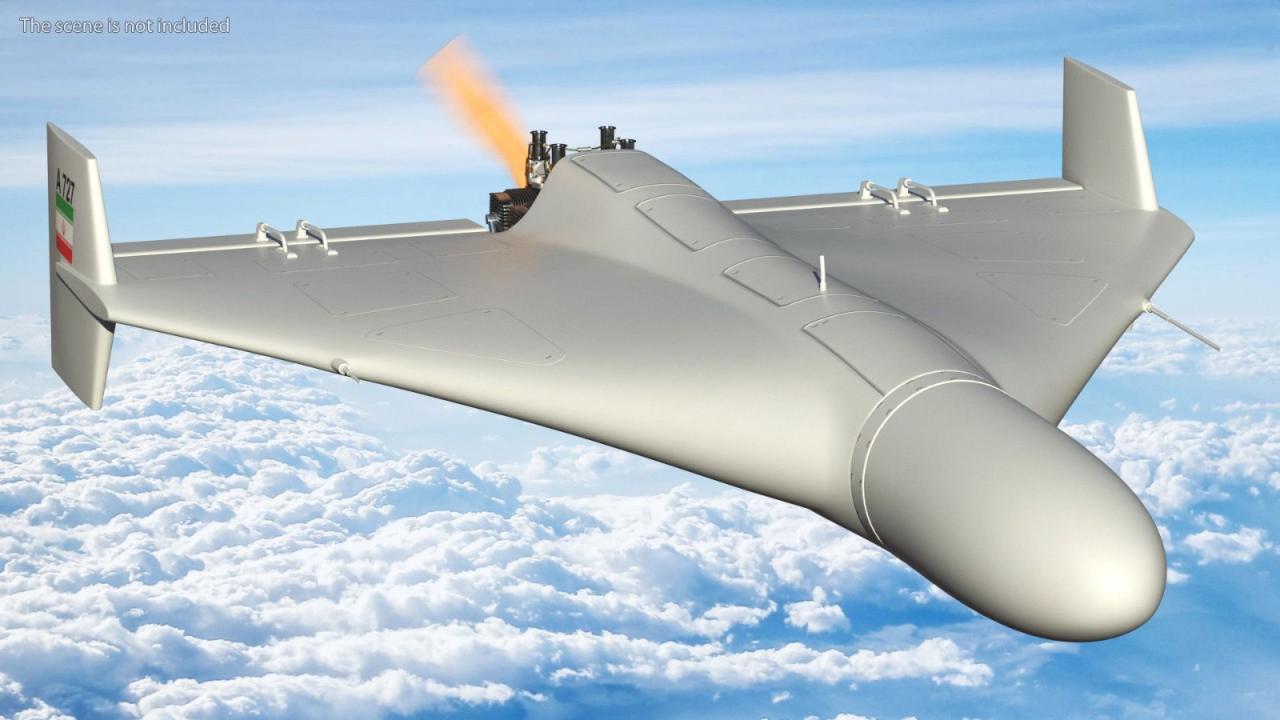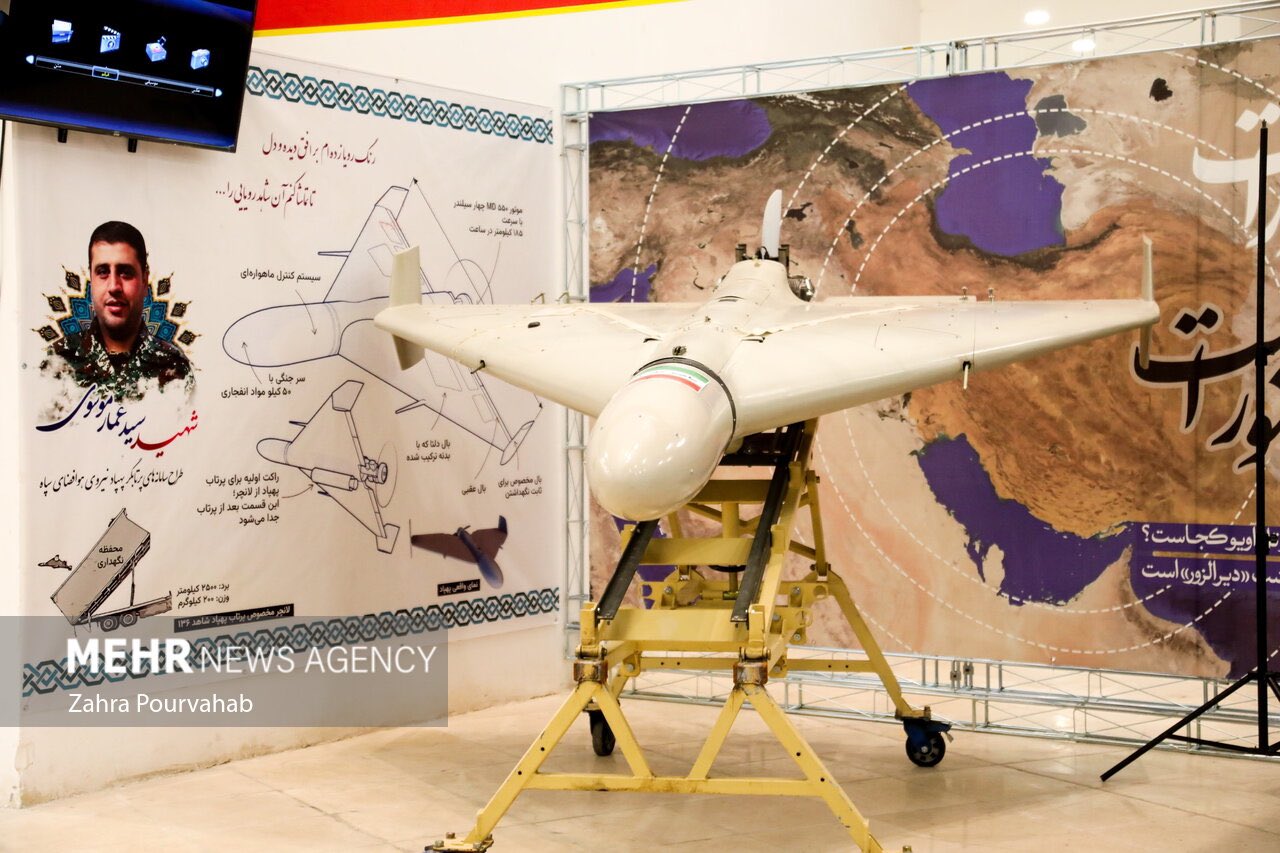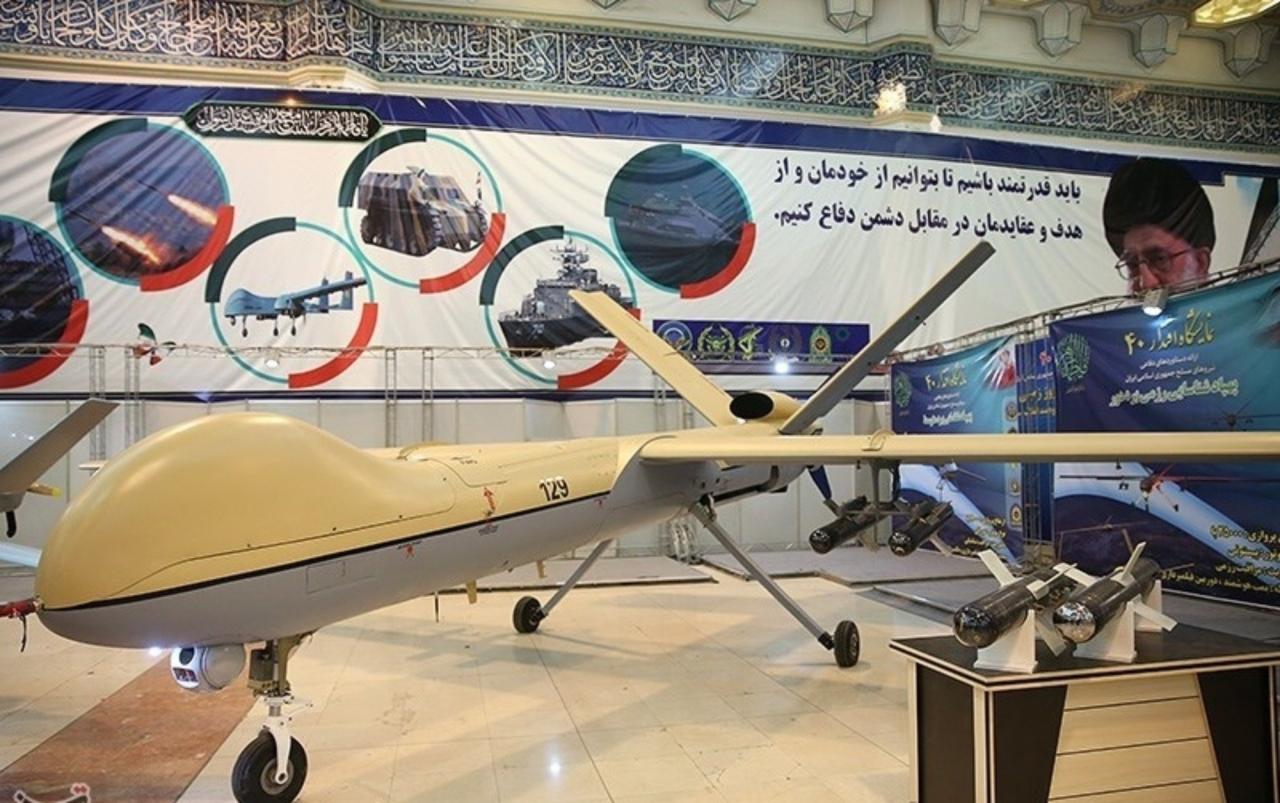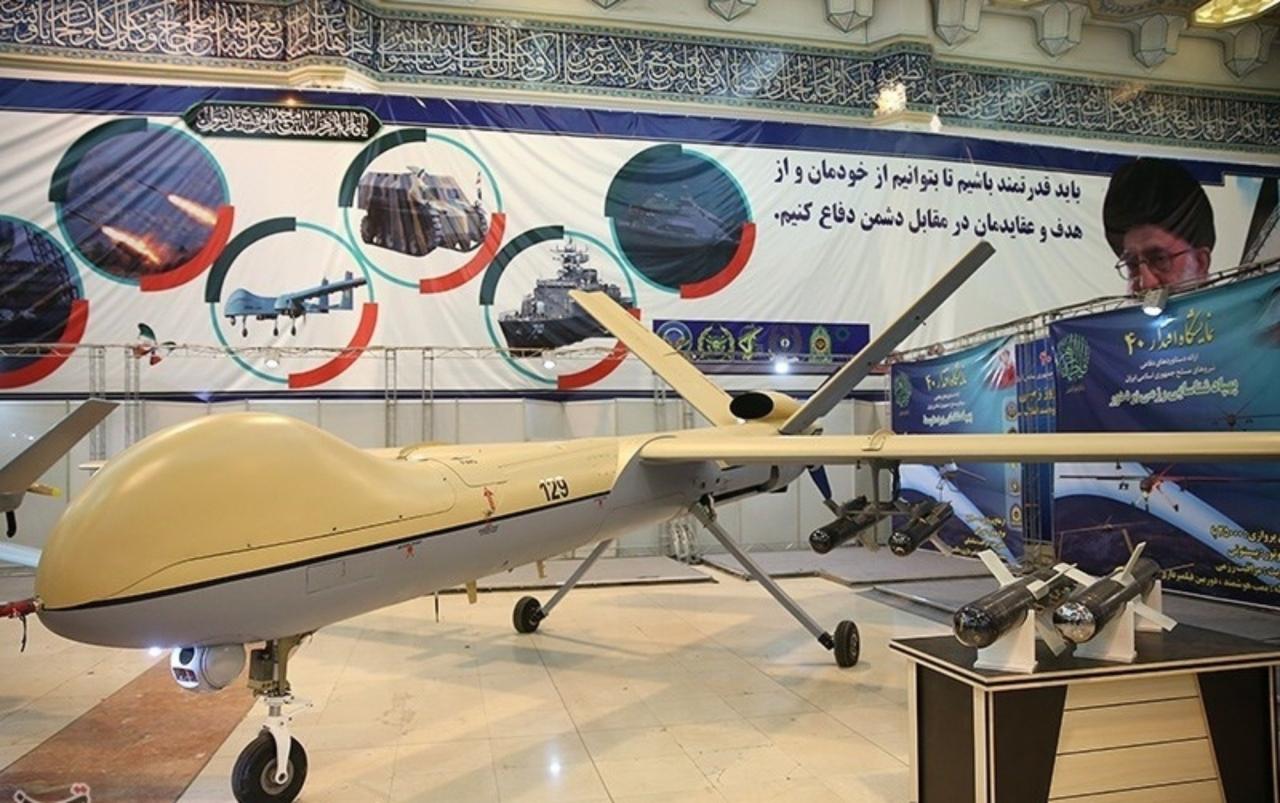Shahed drones, inexpensive and readily deployable, have dramatically altered modern warfare. Their relatively simple design, coupled with their devastating potential, has made them a focal point of international concern and spurred significant advancements in counter-drone technology. This exploration delves into the technical specifications, operational capabilities, manufacturing processes, deployment strategies, countermeasures, and the broader implications of this increasingly prevalent weapon system.
From their origins to their current battlefield applications and future potential, we examine the Shahed drone’s impact on geopolitical landscapes and humanitarian considerations. The analysis covers the drone’s design, its effectiveness, its vulnerabilities, and the ethical dilemmas its use presents. We will also look at the economic and industrial aspects of its production and distribution.
Shahed Drone: A Comprehensive Overview

The Shahed drone, also known as the Shahed-136 or Geran-2, has emerged as a significant player in modern conflict, prompting widespread discussion regarding its technical capabilities, operational strategies, and geopolitical implications. This overview provides a detailed examination of the Shahed drone, encompassing its design, deployment, countermeasures, and broader impact.
Shahed Drone Technical Specifications
The Shahed drone’s design incorporates a relatively simple yet effective framework. Understanding its physical attributes, propulsion system, and communication capabilities is crucial to comprehending its operational effectiveness.
| Specification | Shahed-136 | Similar Drone (Example A) | Similar Drone (Example B) |
|---|---|---|---|
| Wingspan | ~2.5 meters (estimated) | 2.8 meters | 2.2 meters |
| Length | ~3.5 meters (estimated) | 3.2 meters | 3.8 meters |
| Weight | ~200 kg (estimated) | 180 kg | 220 kg |
| Payload Capacity | ~50 kg (estimated) | 40 kg | 60 kg |
The propulsion system typically involves a small, relatively low-cost internal combustion engine, likely fueled by gasoline, offering an estimated flight duration of several hours. Communication relies on a combination of satellite and radio links, providing a considerable operational range, though exact figures remain classified. Control mechanisms are likely a mix of pre-programmed flight paths and potentially real-time operator intervention.
Shahed Drone Operational Capabilities
The Shahed drone’s operational flexibility contributes to its effectiveness in various scenarios. Its modes of operation, targeting systems, and payload options are key factors in its strategic utility.
Operational modes include loitering (circling a target area), autonomous flight following pre-programmed routes, and manual control for more precise targeting. Targeting and guidance systems utilize a combination of GPS and inertial navigation, with accuracy varying depending on environmental factors and operator skill. The primary payload is typically a high-explosive warhead, capable of causing significant damage to targeted infrastructure or personnel.
Shahed Drone Manufacturing and Production
Analyzing the manufacturing process and supply chain of the Shahed drone provides insights into its cost-effectiveness and widespread availability.
- Engine: Likely sourced from readily available components, possibly from various international suppliers.
- Airframe: Constructed using relatively inexpensive composite materials.
- Electronics: A mix of commercially available and potentially domestically produced components.
- Warhead: Likely utilizes readily available explosives and fusing mechanisms.
The manufacturing process appears to be relatively straightforward, involving modular assembly and relatively low-skilled labor, contributing to a potentially low per-unit production cost, estimated to be in the thousands of US dollars. Production scale is believed to be substantial, enabling large-scale deployment.
Shahed Drone Deployment and Tactics
Examination of the drone’s deployment in various conflicts reveals its strategic applications and tactical advantages.
- Ukraine Conflict: Widespread use against Ukrainian infrastructure and military targets, often employed in swarm attacks.
- Other Conflicts (Example): Reports suggest deployment in other regions, though specifics remain limited due to operational secrecy.
Typical tactics involve saturation attacks using multiple drones, overwhelming air defenses, or coordinated strikes targeting specific high-value assets. Compared to other similar drones, the Shahed’s deployment strategy often emphasizes cost-effectiveness and numerical superiority over advanced technological capabilities.
Shahed Drone Countermeasures and Defenses
Understanding the vulnerabilities of the Shahed drone and developing effective countermeasures are critical for mitigating its threat.
| Countermeasure | Description |
|---|---|
| Electronic Warfare | Jamming communication signals, disrupting navigation systems. |
| Physical Interception | Using anti-aircraft artillery or missile systems to shoot down the drones. |
| Air Defense Systems | Utilizing radar and missile systems designed to intercept incoming projectiles. |
The Shahed drone’s vulnerabilities include its relatively low speed, predictable flight path (in some modes), and reliance on readily-jammed communication systems. A hypothetical defense strategy might involve a layered approach combining electronic warfare, physical interception, and advanced air defense systems to disrupt and neutralize incoming swarms.
Shahed Drone Impact and Implications

The widespread use of the Shahed drone has far-reaching geopolitical, humanitarian, and ethical implications.
Geopolitically, its relatively low cost and effectiveness have lowered the barrier to entry for asymmetric warfare, altering the balance of power in several regions. Humanitarian consequences include civilian casualties resulting from inaccurate targeting or unintended collateral damage. Ethically, the use of inexpensive, readily-available drones raises concerns about accountability and the potential for indiscriminate attacks.
The Shahed drone, a relatively inexpensive yet effective weapon, has garnered significant attention for its use in recent conflicts. Understanding its capabilities is crucial, and parallels can be drawn to other drone incidents, such as the recent mystery surrounding unauthorized drone activity, which was thankfully resolved as detailed in this article: drones over new jersey solved.
The New Jersey case highlights the challenges and complexities involved in managing airspace security, lessons which are directly applicable to countering the threat posed by Shahed drones.
Shahed Drone Evolution and Future Developments

Tracking the Shahed drone’s evolution and speculating on future developments provides insight into its potential trajectory.
A timeline would show incremental improvements in range, payload capacity, and potentially more sophisticated guidance systems over time. Future developments might include enhanced stealth capabilities, improved electronic countermeasures, and the incorporation of artificial intelligence for autonomous targeting. Civilian applications are limited but could potentially include surveillance or precision agriculture, though ethical concerns surrounding weaponized technology would likely restrict such developments.
The Shahed drone’s emergence has fundamentally reshaped the dynamics of modern conflict, prompting a reassessment of defensive strategies and raising critical ethical questions regarding the use of unmanned aerial vehicles in warfare. While its low cost and ease of deployment make it a potent tool, its inherent vulnerabilities and the devastating humanitarian consequences of its use demand a thorough understanding of its capabilities and limitations.
The Shahed drone, a relatively inexpensive yet effective weapon, has garnered significant attention for its use in various conflicts. Understanding its capabilities often involves analyzing its deployment locations, and a useful resource for such observation, particularly regarding potential maritime activity, is the port dover live camera. This live feed can offer insights into potential drone activity and related logistical movements, providing valuable context for assessing the Shahed drone’s overall impact.
Continued research and development of effective countermeasures remain crucial to mitigating the risks associated with this technology.
FAQ Summary
What is the range of a Shahed drone?
The range varies depending on the specific model and payload, but generally falls within a range of several hundred kilometers.
How accurate are Shahed drone strikes?
Accuracy is limited, leading to significant collateral damage in many instances. Their effectiveness relies more on overwhelming numbers than precision targeting.
Are Shahed drones easily manufactured?
Their relatively simple design and readily available components contribute to their ease of mass production, though precise figures on manufacturing complexity are not publicly available.
What countries currently use Shahed drones?
While primarily associated with Iran, several other countries have either acquired or are believed to be utilizing Shahed drones, though specifics are often unclear due to the secretive nature of their deployment.
